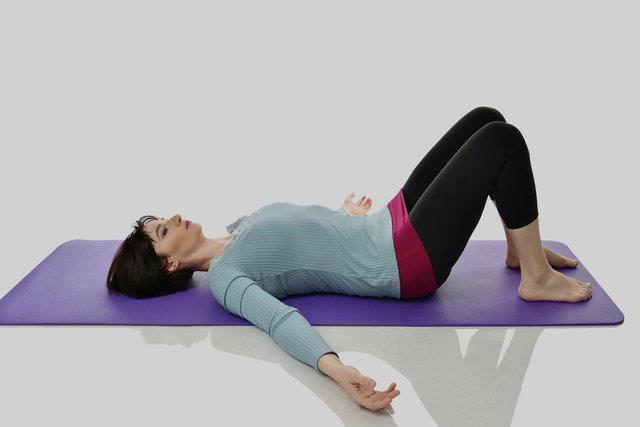Postpartum exercises help to strengthen the abdomen and pelvis, improve posture, relieve stress, avoid postpartum depression, improve mood and sleep, and help you lose weight.
Generally, exercises can be started 15 days after a natural birth or 6 to 8 weeks after a cesarean section, as long as the obstetrician authorizes physical activities. Therefore, it is always important to have medical follow-up and check whether exercises can be done so as not to compromise recovery.
Postpartum exercises can be done at home and should not consume many calories, so that they do not interfere with the production of breast milk and do not hinder the breastfeeding process. During or after performing the exercises, if any discomfort arises or if there is blood loss from the vagina, you must stop performing the exercise immediately and inform your doctor.
Pelvic floor exercises
Some pelvic floor exercises that can be done include:
1. Basic perineum contraction exercise
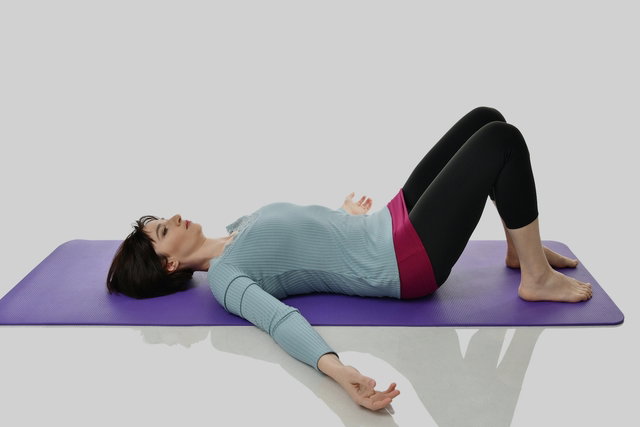
The basic perineum contraction exercise can be done right after childbirth to help strengthen the pelvic floor and combat urinary incontinence.
How to make: Lie on your back and bend your legs. Contract your perineum for 5 to 10 seconds as if you were holding in urine. At the same time, contract your anus as if you were trapping the feces. To relax. Do 10 series of 10 contractions per day.
2. Advanced perineum contraction exercise
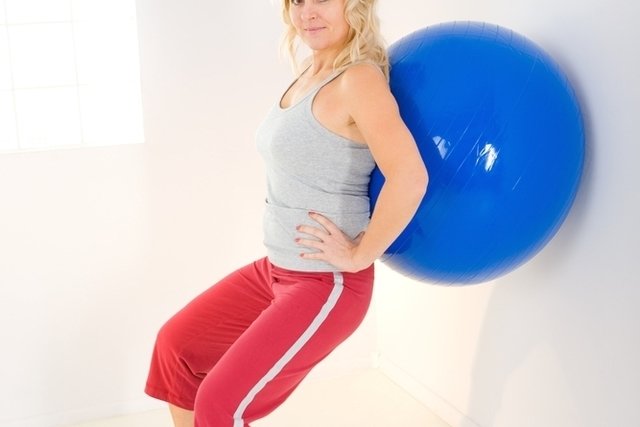
The advanced perineum contraction exercise works the pelvic floor muscles and also helps in strengthening the abdomen. This exercise must be done with the help of a ball.
How to make: With your back to a wall, place the ball between the wall and your back. With your feet shoulder-width apart, contract your pelvic floor and abdomen. Bend your knees as if you were sitting on an invisible chair. The lumbar spine must not lose contact with the ball and the movement must be made molding the spine to the ball. Stay in this position for 5 seconds and return to the starting position. Repeat the exercise 3 times.
3. Kegel Exercises
Kegel exercises are a good option for strengthening the pelvic floor muscles, combating urinary incontinence and improving intimate contact, for example. See how to do kegel exercises.
Exercises for the abdomen
After medical approval, postpartum abdominal exercises can be done 2 to 3 times a week, in 3 sets of 10 to 20 repetitions each.
1. Ponte
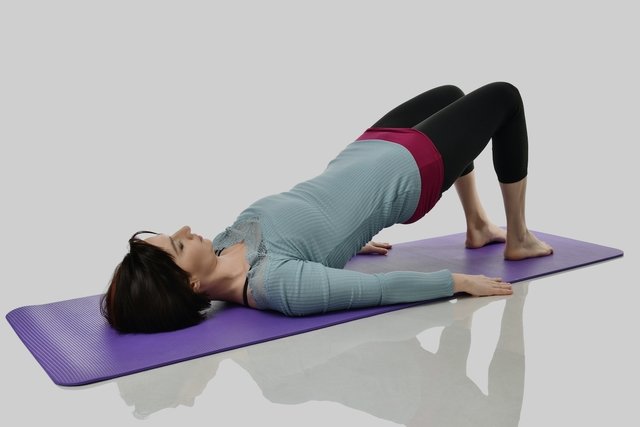
The bridge is an exercise that helps strengthen the abdomen, glutes and thighs, as well as helping to stabilize the pelvic floor.
How to make: Lie on your back, with your arms aligned with your body, bend your knees and place your feet on the floor. Contract your pelvis, abdomen and glutes and raise your hips off the floor, without touching your butt to the floor. Hold this position for 10 seconds and lower your hips.
2. Abdominal with ball
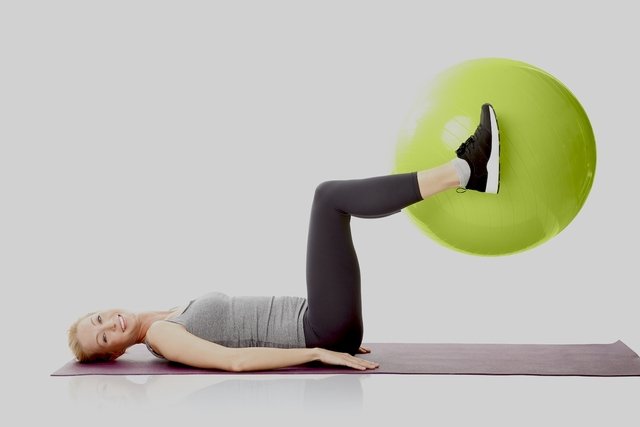
The sit-up is a good option to help strengthen the abdomen and can be done with the help of a ball.
How to make: Lie on your back, with your arms aligned with your body and place the ball between your legs, at ankle height. Raise your legs with the ball, bending your knees, as if you were sitting on an invisible chair. Return to the starting position, relax and repeat the movement 10 to 15 times.
3. Plank
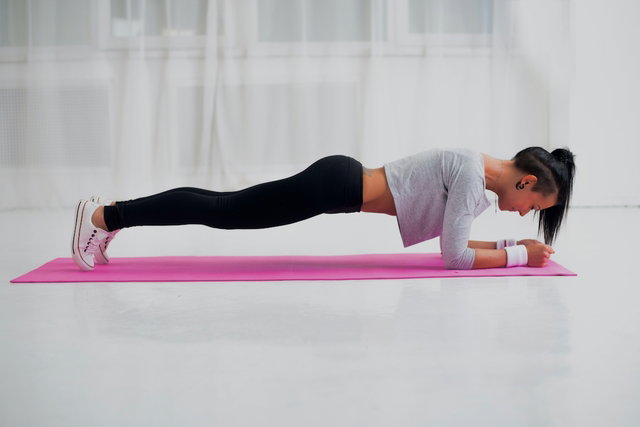
The plank is an exercise that helps strengthen the abdomen, improve posture, increase metabolism, as well as helping with body balance.
How to make: lie on your stomach and then raise your body, resting only your forearms and toes on the floor, always with your abdomen contracted and your head and body straight, aligned with your spine. You must remain in this position for between 30 and 60 seconds. Another option, if you have difficulty doing the plank using your toes, is to support your body with your knees.
4. Hypopressive gymnastics
Hypopressive gymnastics is an excellent postpartum exercise option to tone the abdomen, in addition to strengthening the pelvic floor, combating urinary incontinence and improving local blood flow, which improves sexual performance.
Watch the video on how to do hypopressive gymnastics.
Care during exercises
Some precautions that should be taken when exercising postpartum are:
- Stay hydrated to avoid dehydration of the body and not harm milk production;
- Start activities slowly and graduallygradually increasing the intensity, respecting the body’s limits to avoid the appearance of injuries or compromising postpartum recovery;
- Wear comfortable clothes and a supportive bra, if you are breastfeeding, to avoid discomfort during physical activity.
Furthermore, if you experience abdominal pain, vaginal bleeding or sudden discomfort in the pelvic region, you should stop physical activity immediately and notify your doctor.
Bibliography
- HARVEY, Marie-Andrée. Pelvic floor exercises during and after pregnancy: a systematic review of their role in preventing pelvic floor dysfunction. J Obstet Gynaecol Can. 25. 6; 487-498, 2003
- BANE, Susan M. Postpartum Exercise and Lactation. Clin Obstet Gynecol. 58. 4; 885-892, 2015
- YOUNESS, Entisar M.; IBRAHIM, Walaa H.. Effect of early and progressive exercises on post-caesarean section recovery among women attending women’s heath hospital. International Journal of Advanced Nursing Studies. 6. 2; 71-78, 2017
- PARK, Seong-Hi; et al. Effect of Kegel exercise to prevent urinary and fecal incontinence in antenatal and postnatal women: systematic review. J Korean Acad Nurs. 43. 3; 420-30, 2013

Sign up for our newsletter and stay up to date with exclusive news
that can transform your routine!
Warning: Undefined array key "title" in /home/storelat/public_html/wp-content/plugins/link-whisper-premium/templates/frontend/related-posts.php on line 12
Warning: Undefined array key "title_tag" in /home/storelat/public_html/wp-content/plugins/link-whisper-premium/templates/frontend/related-posts.php on line 13

